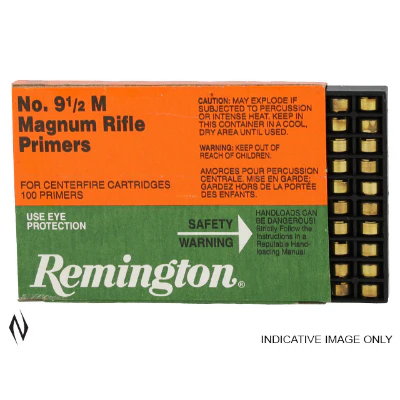Safety is the top priority when working with large rifle primers, which require adherence to standard safety practices to reduce risks. Understanding how to handle large rifle primers safely helps protect against accidents. Here is why rifle primers are safe for use:
Implement Handling Techniques
Avoid accidents by keeping primers away from impact sources such as staples, sharp edges, or areas where they may fall. Employ tools to seat primers securely in cartridge cases to avoid accidents. Keep them in cool, dry areas and out of places like garages or attics. Quality control, steadiness, and other protective features prevent mini-mishaps. Such handling precautions provide an additional safeguard when reloading your ammunition.
Use Quality Components
Reputable brands of primers will go through safety control checks before distribution. Stable chemical compositions, protective casing materials, and verifications provide stable and secure primers. Reloading with primers from tested manufacturers guards against performance inconsistency and accidental dangers. Their experience in the industry and performance records permit them to deliver high-quality products meeting shooting requirements.
Use Storage Solutions
Use storage solutions to maintain the integrity of primers. Keep them in a safe location, such as a safe, and away from areas exposed to heat. Modern storage practices will help keep electronic devices away from components, removing potential hazards. Keep primers away from other reloading supplies like powder or completed ammunition in case of possible accidents. Some signs of instability in old primers may include cracks, unusual odors, or defects indicating unsafe handling for reloading. If you detect any abnormality, discontinue use and upgrade to new-generation options. You can safely dispose of them by soaking them and removing them promptly.
Follow Usage Guidelines
Modern housing can protect primers from destabilizing elements like moisture, extreme temperatures, and direct sunlight. Protect components from common contaminants like dirt, oils, and cleaning chemicals to make sure they stay in working condition. Use appropriate primer packaging to prevent accidental exposure or damage. Remove only the primers required for what you need, and return the rest to storage conditions. Don’t repackage primers loosely in unsealed containers that compromise protection. Inspecting any needed component will help maintain safety and reliability. These storage techniques shield primers from the premature degradation risks that an uncontrolled environment may pose.
Use Reloading Strategies
Following reloading procedures maintains large rifle primers‘ performance and safety. Minimal force is used to seat them in cases to avoid compromising their design intention. Use tools that are specifically made to handle primers. Work surfaces must be clean and organized to reduce the opportunities for impact or contamination. Avoid being careless or taking shortcuts when using primers to reload ammunition. Adhering to tried procedures, in each reload step, guards against compromising mishaps and provides precise shooting.
Discover Quality Large Rifle Primers Today
Purchasing large rifle primers from reputable suppliers provides access to quality brands. Advanced storage solutions guard primers from destabilizing environmental impacts, keeping them ready for use. Searching for secure primers will help you promote the security of your reloading practice. Working with premium suppliers may facilitate match-grade shooting success. For quality firearm parts, reloaders source components from trusted vendors.
- Neverafter Dimension 20 Dailymotion – A Dark Twist on Classic Fairy Tales!
- Genshin Impact Daily Check-In – How to Claim Free Primogems, Mora !
- Planta de Fluidos de Perforación en Punata Camacho!
- GTXHosty.com – India’s Fast-Growing File Hosting and Web Storage Solution!
- Ablison.com – Your Complete Guide,Benefits, Drawbacks & Final Verdict!













